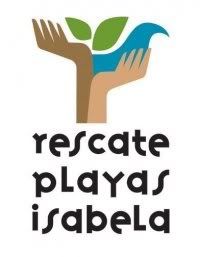THE WATER QUALITY OF SPECIFIC BEACHES
This is certainly one of the basic questions the general public has regarding the program, and despite its apparent simplicity is not actually that easy to answer yet. Certainly the survey has shown that no specific beach is consistently and constantly contaminated, but beyond that fact is there any way to determine if any beaches are ‘safer’ than others in the Rincón area?
One simple way is to compare how many times specific beaches registered bacteria counts greater than the 104 MPN level.

But this is not a totally satisfactory yardstick, for a couple of reasons. Some beaches were sampled less frequently than others- for instance the Rio Grande site, due to its difficulty of access, was tested less often and could very well be far more contaminated than the survey shows. Some beaches were sampled more intensely- the Corcega site was examined much more than the others, and so results from there could be an ‘artifact’ of the cumulative results of various research efforts. And it does not deal at all with the fact that bacteria levels below the 104 level but above the 35 MPN level could be unsafe for those swimmers in the ‘at risk’ category.
A better, if less simple, method is to compare the statistics generated by the 17 month survey. Actually, the cumulative statistics here are the true fruit of the survey (aside from the weekly email postings of the test results) and will be used to shape the second phase of the testing program, once the survey has been completed. These numbers are what ‘justifies’ the program in terms and time and money spent, so they are worth examining closely.

For a larger view of this image, click here
The average bacteria count per beach is a simple number, the total of the test counts divided by the number of test dates for that beach. Unfortunately they are not an adequate yardstick for the question of ‘safety’, since one high reading can really skew a long series of 0 counts, and we have definitely had some high readings. So this number doesn’t accurately reflect what the water quality may be at any given time. However, it will come in useful.
The next yardstick is the standard deviation of bacteria counts per beach. This number becomes the workhorse of future statistical evaluation since it gives you an idea of the variability of the test results for that beach. The higher the SD means the wider the swings of bacterial levels detected, generally higher rather than lower. For bathers, this number indicates how likely it would be that, if the coast has been contaminated, each beach would compare to an average. A higher SD suggests that beach would more contaminated than average, for a number of reasons not clearly understood yet. After a heavy rainfall you might want to avoid swimming at these beaches for a longer period as well. Standard deviation will also be used in our continuing search for ‘bellwether’ beaches, sites we can test that would indicate the general water quality for much larger sections of the coast. Again, beaches with a high SD are totally unsuited for this purpose. Standard deviation also answers the problem of, since bacterial levels do fluctuate so much, how do we judge what an ‘unusual’ reading is? For any single bacteria count from a sample taken from a specific beach, 68% of the time it should be within one SD plus or minus from that beach’s average (in our case, always added-our beaches are fairly clean I have no doubt there are places on this island where such averages and SDs are high enough that subtracting would be possible, and would not recommend even wading there) and 95% of the time the result should fall within two standard deviations from the average. Anything beyond that automatically becomes unusual, interesting or, as is said in the trade, statistically significant. As I’ve said, standard deviations are going to power a lot of the shaping of second phase of the testing program. To be completely honest, since the survey hasn’t been completed yet, what we should be using here is a number called the sample standard deviation, which involves calculating a margin of error for these results. That is why you see those little + or - percentages on the bottom of the opinion polls that are so popular these days, as it is very difficult to poll enough people for a statistically valid sampling. The same thing happens in water sampling, but I’m keeping these numbers as simple as possible for the time being.
The final statistical yardstick is the geometric mean per beach. This is a bit more complicated, but more accurate, way of comparing water quality when using something like bacteria counts which do vary so much from week to week, and may have seasonal or yearly cyclical fluctuations as well. Calculating the geometric mean is a logarithmic function, but the easiest way to explain the number is that it is a mathematical method of minimizing the impact of high and low readings and focusing on the midrange test results. As we see, the GMs are extremely low for the surveyed beaches. Federal standards define a geometric mean of more than 35 MPN of enterococcus as dangerous, requiring public notice/flagging/beach closing, and a GM can only be calculated after a minimum of five sequential tests. Have we ever had times when test results showed over this level? Unfortunately yes, during the very first month of testing If you go back to the main chart you’ll see that the beaches we did test 5 times that month were far over, or darn close to, this. The relevant part of the spreadsheet follows:

or a larger view of this image, click here
Basically that month the whole coastline should’ve been flagged and closed. This was the event that spurred us to really upgrade the program’s data collection parameters beyond the typical BWTF requirements. It is also, sad to say, what we must be prepared to respond to at any time. When and if another contamination event of this magnitude happens we should be ready to do increased testing, carry out some offshore current measurements (beyond the surf break) on our own, and try to get our water samples to more complete lab facilities for confirmation of our results, complete speciation of the bacteria in the water, and any chemical analysis we can afford while we plaster the beaches and town with posters. This would be our version of a 5-alarm fire It has happened once, and can happen again at any time, so it seems. And the only way we’ll ever know is to have a continuing testing program and constant monitoring of a few beaches at least.
Using all these various yardsticks we can compare the surveyed beaches to create an informed, if only very tentative, opinion as to their relative freedom from bacterial contamination. To repeat, this are tentative conclusions based on an incomplete survey and insufficient data But better than nothing of course.
With this in mind, it would seem that (from north to south) Rio Grande, Pools and Marias would be the least safe beaches at any given time. Domes, Steps and Parcelas would seem to be the most safe.
I should note that I don’t include the South Barrero site in these calculations as there weren’t enough samples taken to generate meaningful numbers. I also note that Rio Grande has the second highest average, the third highest geometric mean, while having a standard deviation in the mid range. Thus statistically it would be the closest we’ve found to a consistently and contaminated site, which is certainly suggestive and bears further research. But, to repeat again, at this time it is only a suggestive and interesting observation.
For the complete spreadsheet page showing cumulative statistics by season for the survey period click here
For more information, or to volunteer to assist with this program, please contact Steve at stevetamar@gmail.com





No comments:
Post a Comment